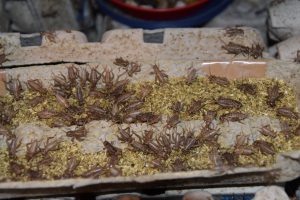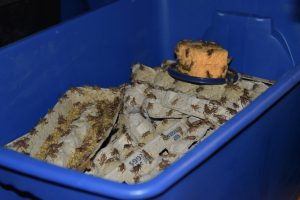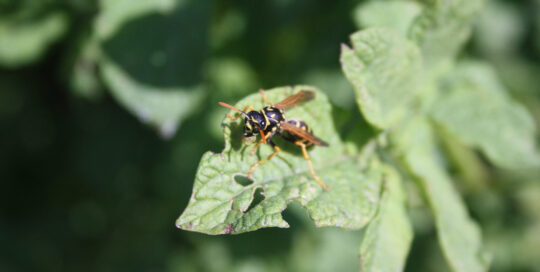Eating garden crickets makes sense
Views: 1153

Eat your pests
Last year we talked about eating the weeds in your garden as a means of controlling them and making the best of the situation. Maybe the same works for the insects. Although we often grouse about the insects in our garden, one person’s pest is another one’s meal. This is particularly true for crickets, which are all the rage as solid sources of sustainably raised protein.
The best way to enjoy your crickets
Used as flour substitute in cookies, like my favorite “Chocolate Chirp” flavor, or a protein meal. They’re also whole roasted with an assortment of flavors for crunchy snakes. (I have to say, I am partial to our Cowboy Crickets out of Belgrade, Montana.) They’re also really good, and not to sound like a commercial, but they’re good for you, too. 2 tablespoons of cricket flour has a whopping 11 grams of protein and a healthy dose of vitamin B12. With much of the world eating insects, it’s an overlooked protein source in our culture.
Do crickets harm the garden
Crickets aren’t necessarily pests in the garden, although when there are a lot of them the damage to plants plants and chirping is annoying. As omnivores they nibble on some vegetation, but rely on a multitude of sources. As a matter of fact, a research project out of Michigan State University found a single female cricket ate over 200 weeds seeds in a day.
They eat aphids and other small insects, as well as are champs in cleaning up garden debris. If they’re a problem in the garden, dust your plants with diatomaceous earth… unless you want to raise them to eat.
How do organic pesticides work?
Raising crickets at home
Instead of plucking them from the garden, which is still possible, if you’re a local cricket connoisseur, there are specific varieties of crickets bred for their edibility. Just like cows or bees, breeders recognize desirable traits, including taste, and strive to make them consistent.
Friends of mine raised crickets for a commercial operation, and it didn’t require high tech equipment to grow tens of thousands of them. For the home grower, use a large tub (or tote) and plenty of empty, clean egg cartons as the primary components to housing. They prefer temperatures around 85-90 degrees F (heat lamps help increase the temperature) with humidity between 40-70 percent humidity. Keep wet sponges in the container for water so they don’t drown. There are commercial feeds available, or feed them fruit, grain, and extra vegetables.
Crickets naturally live around 6 weeks as adults, breeding, depositing eggs in the soil, then dying. Raising them for food syncs with this life cycle. Provide a medium in which to lay the eggs, then collect the adults afterwards to freeze, mimicking the crickets naturally dying at the end of the season.
Once they’re deceased in the freezer, roast or toss them into whatever food you want. To make them into a powder, dehydrate them before blizting them in the food processor.

Continuing the cricket cycle
With the eggs in the substrate, keep them warm and in a humid area until they hatch within a few weeks. Also take this opportunity to clean out and disinfect your tote container where you’ll keep the new batch. Once the baby crickets are hopping about, set the small container in the tote to start the new generation.
Meet Amy Grisak
Amy is a freelance author and photographer in Great Falls, MT who specializes in gardening, foods, and sustainable agriculture. She provides information on every kind…
Amy's Recent Posts

Looking into the Crystal Ball for a Pest Report








